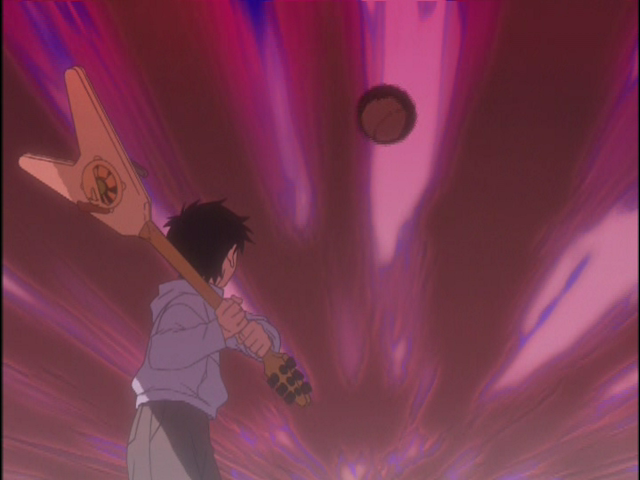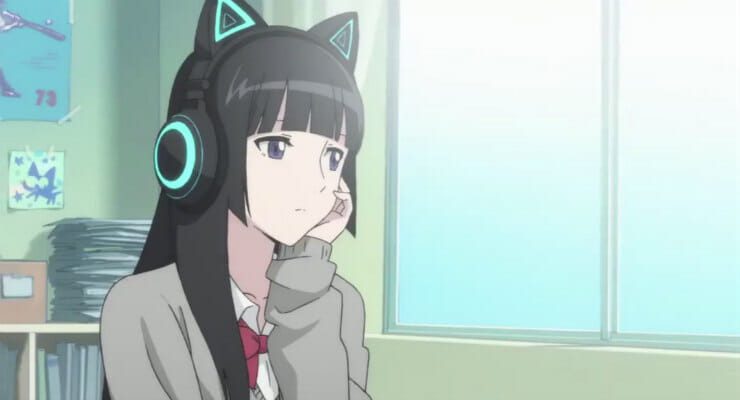How "Progressive" is FLCL Progressive?
FLCL Progressive, the sequel to the beloved series that weaved its bewildering tale of adolescence in 2001, is already half way over. Like its predecessor, Progressive will run its entirety in just six episodes before putting a lid on its story. Tonight the fourth episode will mark the beginning of its second half. So how does the series hold up to the original? Well, it depends on who you ask. From a critical standpoint, much of what made me and many others who were still adding a second digit to our ages resound FLCL is no longer present. At first glance, FLCL Progressive has more of a sense of direction in both its characters and its story telling. Haruka is no longer the girl who randomly shows up in a yellow Vespa to bring our main character on a jaunt to achieve purpose and self-awareness. Instead, she retains the same ulterior motives she was revealed to have had at the end of the first season. Of course, ridiculous situations still tend to occur wherever she goes. These are now backed by those yet-to-be-revealed motivations. Unlike the first series, Haruko doesn’t seem to develop much of a relationship with Hidomi, the protagonist of Progressive, or any of her friends. Although the end of the first series proved she was acting on her own ambitions, it was the relationship she constructed with Naota that forced viewers to view her character three dimensionally. The effects of their relationship persisted even after the series’ climax and the credits rolled. Since Haruko acts almost entirely off her personal motives in Progressive it is fair to speculate that the series is aiming for more concrete direction in its story.
Is this because the first series lacked direction? Names like N.O. and Medical Mechanica help make up the series’ obscure terminology in the first few episodes, but truly lack any context until the last episode. The viewer knows Medical Mechanica has something to do with the appearance of Haruko and the robots that appear out of the N.O. channels she is able to manifest. What they have to do with all of this is never explained in full, but enough information is given for the viewer to know that it is part of the story’s bigger picture. Commander Amarao, a character that appeared in the series’ latter half, is shown to have some history with Haruko. His supposed history with her and his mentions of Medical Mechanica show that the three share some sort of relationship. Amarao continues to play a secondary role through the rest of the series, but, just like Haruko’s relationship to Medical Mechanica, his primary relationship to either is never fully explored.
As the series progresses, little bits of context are given to these overarching relationships. The viewer soon learns that there is much, much more going on in the bigger picture than they are able to see through Naota’s perspective. They learn of a plot that concerns space pirates, aliens, and an intergalactic entity’s attack on Earth. Mind you, the viewer learns of what the plot concerns. The series drops bits of context here and there, but does not spell anything out for the viewer. So to answer the question on hand, no, the original series does not lack direction. Sitting down late at night to watch FLCL on Adult Swim, eleven-year-old me initially thought he was watching a crazy series with insane characters and even more insane phenomena. With each passing episode, the small portions of context showed that the direction the show’s story was going was just as complex as its presentation. As the viewer sees everything through Naota’s perspective, it is only fair that they are just as concerned about the bigger picture as he is. Above the plot's “bigger picture” lies the prime narrative. This is the intertwining relationships Naota shares with Haruko, Mamimi, and the rest of the cast. Like Naota the viewer observes these relationships first and foremost. For first time viewers making sense of the plot is secondary to making sense of FLCL’s unique cast of characters and their relationships with one another. After getting a good grasp on the characters the viewer is able to begin piecing together the context of the overarching plot. Once the viewer understands the characters’ relations they are then able to understand their correlation.

(Suddenly "swinging the bat" has new undertones)
Progressive opts out of this complexity and hinges on a narrative that all but promises to reveal more story elements with each passing episode. This may be where the Progressive subtitle comes in, as progress is definitely the name of the game with the sequel’s plot. Incidentally, Progressive and Alternative (the third season that has yet to air) are also sub-genres of rock, a huge influence of the show’s atmosphere. Whether this actually has any bearing on the portrayal of the series is anyone’s guess, but one thing aboutProgressive’s presentation is true. Whether it lives up to the original or not, it does not want to be relegated as a simple imitation. It’s a tough spot to put the series. Different isn’t always good, but FLCL is universally recognized as a unique series that cannot be replicated. At the very least, the staff has to use influence from the original series conservatively and try their hand at creating something different with it. It is an odd sort of alchemy that warrants a phrase I once heard Eric Stewart say at convention: “you cannot reinvent the wheel, only roll it in a different direction”.

(Apparently, the whole "girl with cat ears" thing is an exception to that quote)
With that said, I urge everyone to remain open-minded of the new series. If you told me fifteen years ago that a second season of FLCL was going to be made in the future, I would have been ecstatic. Now, at twenty-four, it’s all I can do to suppress a full critique in order to retain the same youthful enthusiasm for the series. We have one hour until the second half of Progressive shows what it has in store, and I’m more than excited to see where Production I.G decides to roll its wheel.

0 Comments Add a Comment?